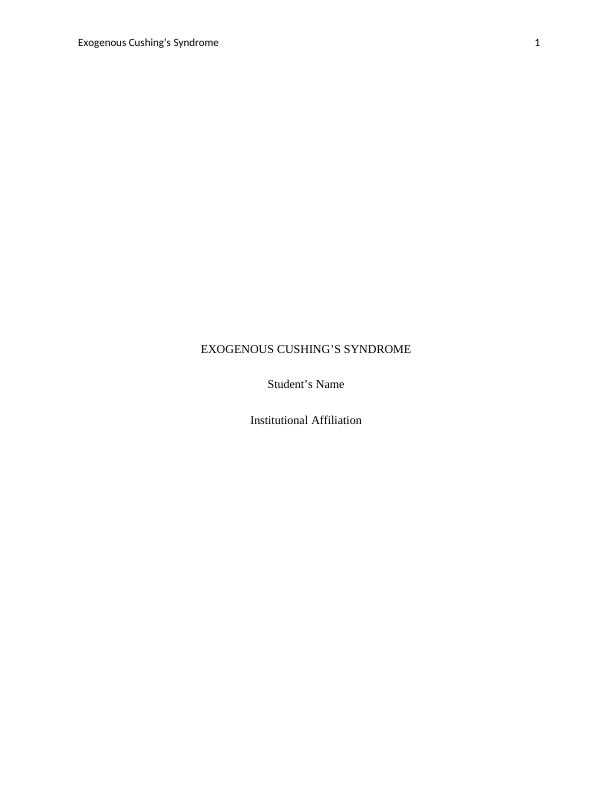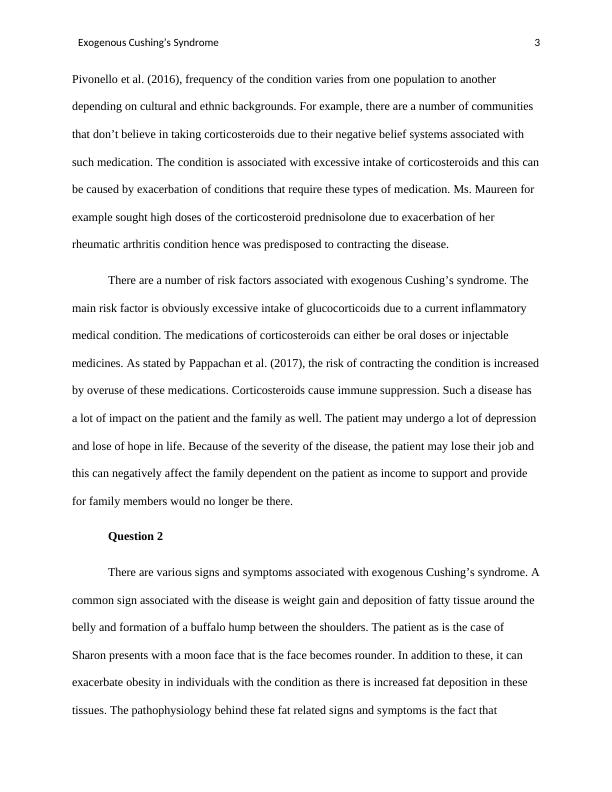Exogenous Cushing’s Syndrome
9 Pages2162 Words490 Views
Added on 2023-04-17
About This Document
Exogenous Cushing’s syndrome is a condition caused by elevated levels of cortisol that results from excessive intake of glucocorticoids. This article discusses the causes, symptoms, and nursing interventions for Exogenous Cushing’s Syndrome. It also highlights the risks associated with the condition and provides insights on its management.
Exogenous Cushing’s Syndrome
Added on 2023-04-17
ShareRelated Documents
End of preview
Want to access all the pages? Upload your documents or become a member.
A Case Report of Cushing's Syndrome
|9
|2494
|276
NRSG353 Assessment Task 1 – Case Study
|15
|3448
|252
NRSG258 Acute Care Nursing : Assignment
|10
|2874
|30
Nursing Case Study on Exogenous Cushing’s Syndrome
|10
|2522
|429
KIN 4043 - Therapeutic Case Study
|12
|4547
|42
Cushing syndrome Assignment pdf
|11
|2732
|33



